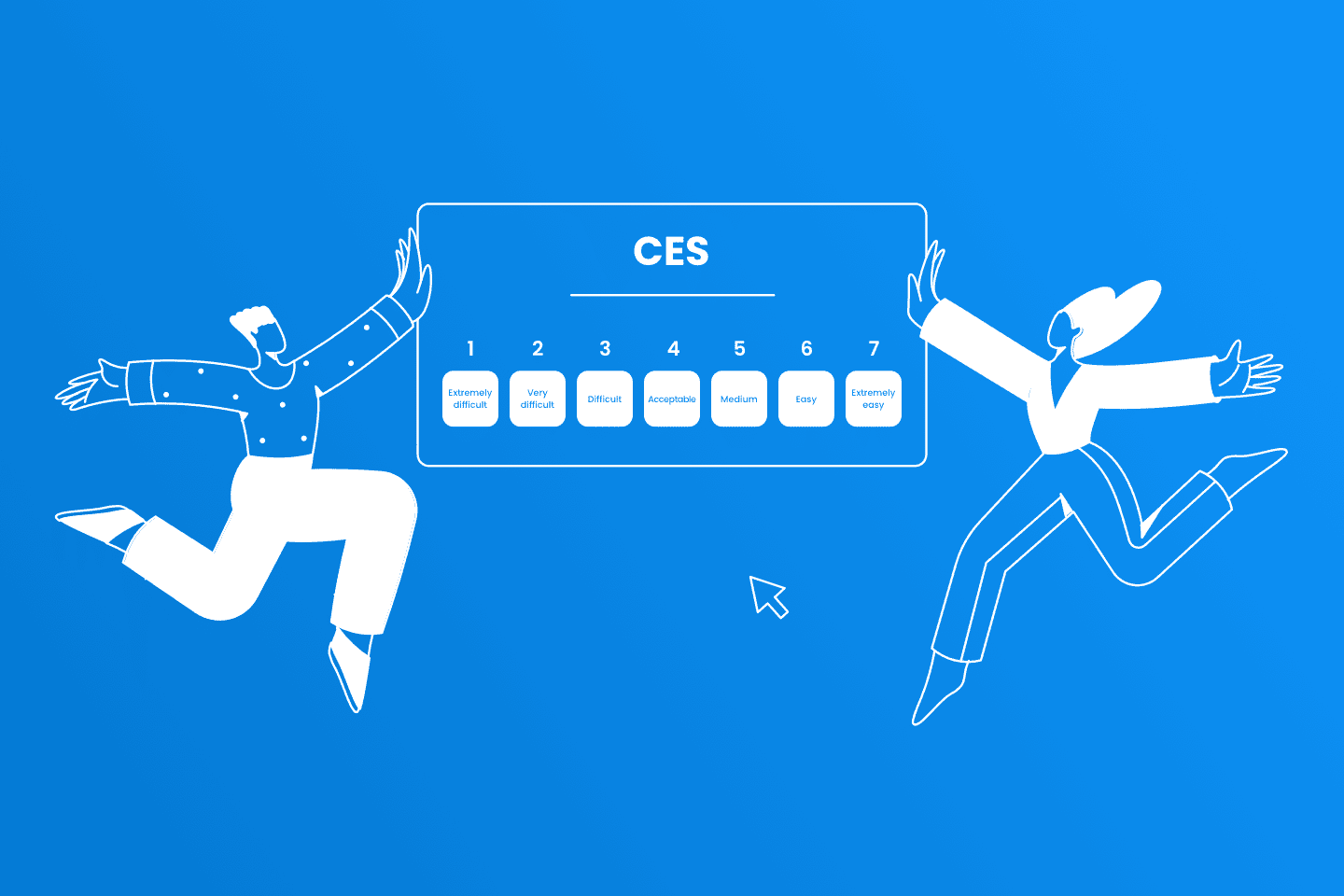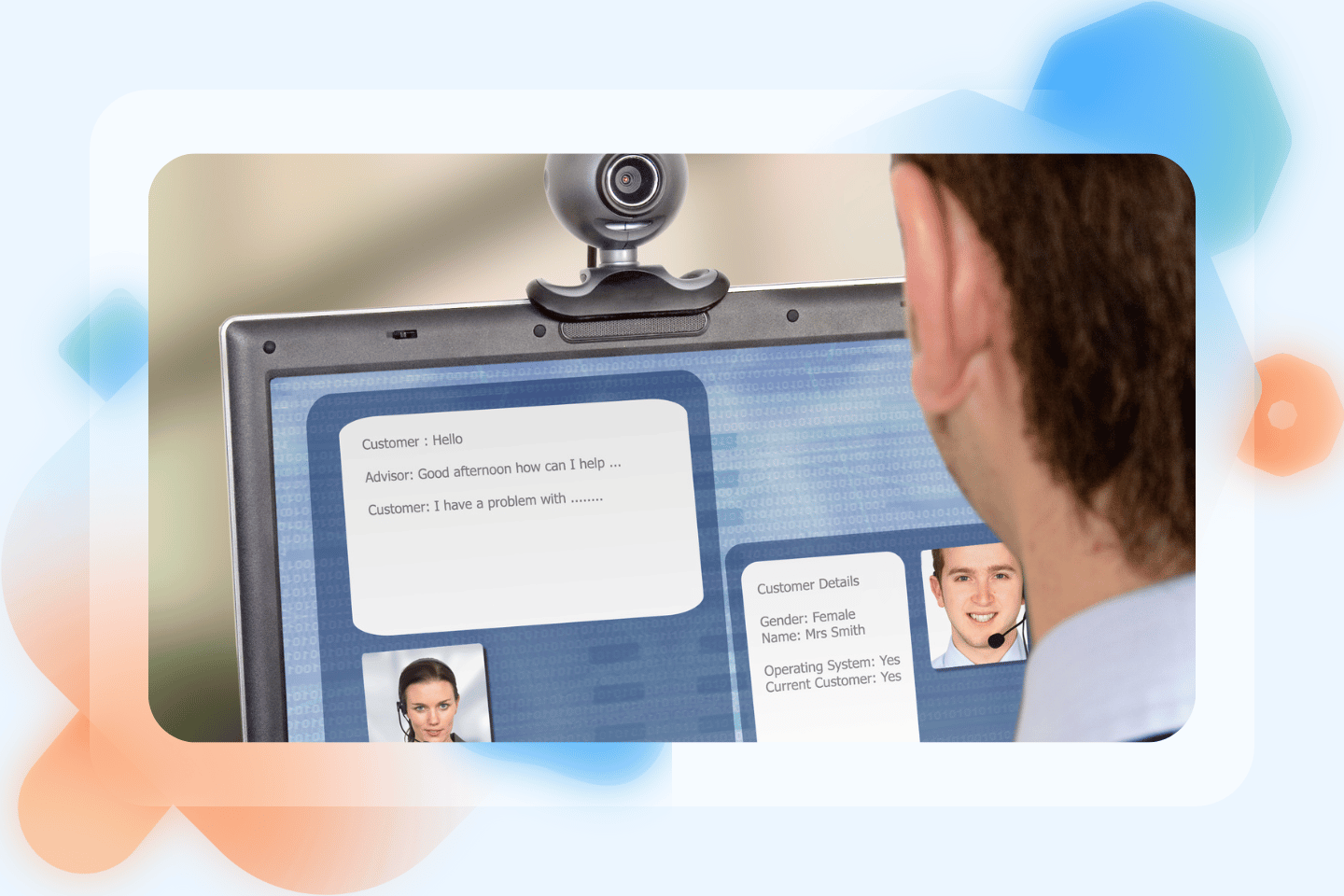As technology users, we have become accustomed to getting everything in one click. Using a new app, software, or service must be effortless. This is where Customer Effort Score (CES) comes into play.
In this article, we explore the topic of the Customer Effort Score and SaaS. Why is it important? How can businesses implement CES with further improvements?
What is Customer Effort Score?
Customer Effort Score in SaaS is a customer experience metric that represents the ease of product use or communication with your company.
The customer effort score definition first appeared in 2010 when CEB Global Analytics found that working to reduce effort could have a more significant impact on customer loyalty than investing in acquisition actions.
It basically answers this one simple question:
On a scale from ‘extremely easy’ to ‘extremely difficult,’ how was your experience using our product?
However, you can also focus on other aspects:
- What difficulty level did you face in a particular onboarding stage/communication channel?
- How much effort did it take for you to reach our company with a question? How much effort did it take to resolve your issue?
Here is an example of how Slickr performed it in practice:

Even though the questions are simple, the CES survey helps business owners gain some insight into customers’ sentiments and if improvements from your side are needed.
Calculating and measuring Customer Effort Score in SaaS
Initially, CES was measured on a scale from 1 to 5. However, benchmarking the original CES score was problematic. Why? Because ‘effort’ can mean many things in different contexts. Basically, it was too subjective.
With time, the level of effort scale was adjusted to 7 options since it was more reliable and less prone to interpretation errors.
How is CES calculated?
CES in SaaS constitutes a percentage/index of customers who report that it was at least relatively easy for them to resolve some issues or finish an interaction with your brand. For example, if you asked 7 customers, 5 of them found it easy to resolve their issue. It means the CES score is 70% or 5 of 7 customers.
Some prefer a simple subtraction formula: percent of easy interactions minus difficult experiences. Here’s the formula from the example above: 70% of easy interactions minus 30% of difficult ones.
A customer effort score formula may look as follows:

Remember that this calculation works for both qualitative and quantitative research.
Here’s a more advanced qualitative example:
Suppose you’ve asked 500 clients a question: “How difficult is it to get in touch with us via support chat?” and got the following responses:
- Extremely difficult (1 point): 55 customers
- Very difficult (2 points): 75 customers
- Difficult (3 points): 55 customers
- Acceptable (4 points): 65 customers
- Medium (5 points): 70 customers
- Easy (6 points): 85 customers
- Extremely easy (7 points): 95 customers
Applying the formula, we have:
CES = (55 x 1) + (75 x 2) + (55 x 3) + (65 x 4) + (70 x 5) + (85 x 6) + (95 x 7) / 500
= (55 + 150 + 165 + 260 + 350 + 510 + 665) / 500
= 2155 / 500
= 4.31
The acceptable CES score is 4. So the users can easily reach you via chat. However, they also do not consider the interaction very easy and smooth.
CES vs customer satisfaction metrics in SaaS
Building customer loyalty is a constant concern for customer success teams. Some professionals tackle customer support issues with CSAT or NPS techniques, as both offer insights into business performance.
However, these metrics must include an important part of the proper delivery of good customer service: how much effort do users need to make to interact with your business? After all, Gartner’s research shows that an effort to interact and solve a problem with a company makes disloyal nearly 96% of customers.
What does this mean? Don’t ignore the CES score! It is just as important as the customer satisfaction metrics for your SaaS.
3 main benefits of Customer Effort Score in SaaS
The easier it is to interact with a business, the more profitable customer relationships will be because of:
- lower operating costs associated with the business-user interaction
- ongoing micro-selling opportunities.
- alleviating pain points and occasions like unhappy users
In this way, Customer Effort Score represents 3 main benefits.
Detecting areas of improvement
CES helps you recognize areas with drawbacks: low qualification of a support team, poor communication, inefficient channels, product issues, etc. Then you can work more assertively in reducing each moment of ‘customer pain.’
Enhancing customer loyalty and retention
By aiming to reduce the customer’s effort points, you start offering a service that really meets customer expectations. This directly impacts customer churn and the customer life cycle.
Remember that a frustrated customer can cost you. Not only can you lose a devoted user, but you could end up with negative reviews all over the web. Customer effort score surveys identify issues early on for proactive reputation management.
Improving customer experience
Targeting your efforts specifically at improving CES impacts the customer experience in a good way. In addition, identifying a trend of complaints can help to anticipate them, offering much more accurate and proactive support.
Customer Effort Score and SaaS: 4 steps to start
1. How to get CES
When is the best time to get CES scores from customers? It depends. There are some tests that you should run immediately, and some are worth waiting for:
During user onboarding. It depends on whether a product has many features or targets specific users. However, evaluating CES during onboarding gives you a full picture of product adoption and space to streamline user onboarding.
After an interaction with customer support. By asking for customer feedback after someone reaches for support help, you can react quickly to negative comments and evaluate the usefulness of interaction. This makes it easy to prevent major crises, understand customer communication channels, and develop a knowledge base.
After specific occasions. For instance, you launched a new product feature, some customer segments used a beta version of a product, you rebuilt your website, etc. Isn’t it a good time to understand the level of customer effort interacting with an update? You’ll get important first-hand impressions and increase attention to your regular customers.
So as you see, understanding when to implement CES activities comes from the initial intention. A random CES survey is not much valuable.
2. Decide on how you’re going to measure CES
Once you’ve chosen the touchpoints you want to check, it’s time to think about collecting and measuring that feedback. Here are a few options to consider:
- dedicated emails
- in-app messages
- free text in chats
- call with customers
- like/dislike pop-ups
- emoji ratings
- matrix questions
Also, remember to give users time to familiarize themselves with the product or service. If a user has exchanged a couple of messages with a customer support agent, don’t ask about their impression after each. Getting a user impression after the conversation, even after a pause, would be okay. One email survey example is given below.

3. Craft CES survey questions
The success of gathering CES data depends on the questions you ask heavily. The CES question should be reasonably short and unambiguous. Nevertheless, there is room for creativity, depending on the type of survey you use.
Among other options, many companies use variations of this question:
To what extent do you agree with the following statement? [The company] handled my case efficiently.
Answering the same question repeatedly can get boring, so sometimes it’s worth changing something:
How easy was it to get the help you needed? Easy – Neither easy nor difficult – It was hard.
In this version, the rating scale has been simplified to 3 options. Respectively, the answer to the question is very simple and quick, but it might not be very representative.
Another option:
How does the effort compare to your expectations?
This CES question will give you an additional knowledge about what ‘hurts’ your users, so you can plan appropriate corrective actions.
4. Analyze CES survey results
An analysis is a fundamental step to identify areas of improvement for your product, customer service, website, etc. If you’ve detected that your customers are rating a lot of effort for a certain action, it’s time to mobilize the team.
To start with analytics, you can use dedicated customer experience solutions. But when you have much customer data, you can back it up in a secured database. After that, you can export it into an advanced analytics solution. For instance, export data from BigQuery automatically and use it for further careful assessment and visualization.
How can you improve low Customer Effort Score in SaaS?
Work with customer feedback
It’s time to close the feedback loop and resolve any issues the users may have. It means thanking customers who provided feedback to let them know they were heard and that you are proactively resolving any issues arising from open feedback.
Route feedback directly to the responsible team so they can see what customers think in real-time. Integrate feedback into your help desk, CRM platform, or internal chat tool like Slack.
You can set up your survey flow to respond to the customer with an apology for a bad experience or offer them some reward: custom solution, discount, etc. It’ll help emphasize their product value and show that you care.
Streamline customer onboarding
First impressions and interactions with your product are the most important. That’s why collected feedback will help adjust the onboarding flow to widen the group of devoted brand ambassadors.
With CES data, you’ll see user onboarding flaws. Plus. you’ll be able to streamline this process by offering onboarding calls, changing time and ways of communication with new users, mixing onboarding steps, etc.
Polish product features
If some new feature or design starts generating poor CES scores, this is an excellent opportunity to rework your product growth strategy.
By understanding the level of user effort, you’ll know which features the product team should polish or which functionality is better for overall user retention and experience.
Developing a knowledge base
To improve the CES score, you need to create a knowledge base. It relates to both new users and loyal ones.
Based on support requests and product updates, you can complement the knowledge base with explainer video tutorials, exhaustive FAQs, and guides.
Start zeroing in on CES today
Keeping SaaS users satisfied is challenging, and user-product interaction is the essential element.
CES is a useful indicator to identify barriers users may face during interaction with your product. Customer Effort Score in SaaS also opens the way to improve customer satisfaction and loyalty, polish your product, and streamline customer support functionality.
Do you pay enough attention to CES? Let us know in the comments how you keep your customers satisfied in their interactions with your product and company.






